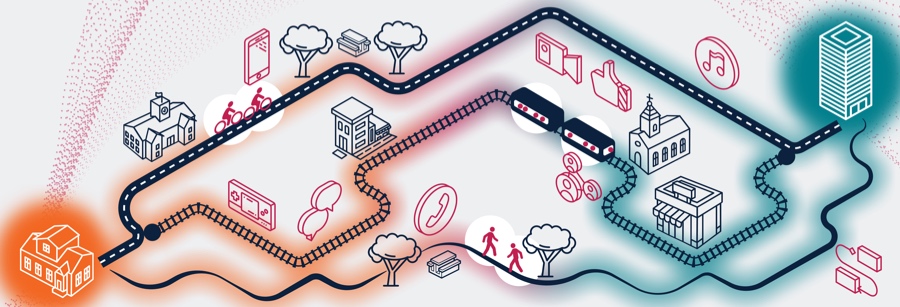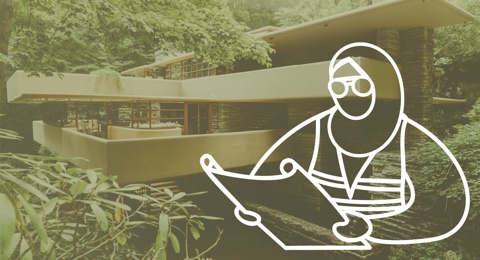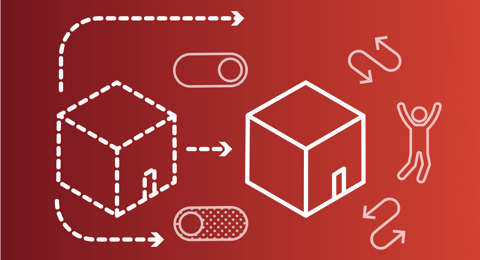Where Does Everybody Know Your Name?

Creating Third Spaces That Welcome Everyone
In the 1989 book in which sociologist Ray Oldenburg coined the term “third place,” he also wrote, "where the means and facilities for relaxation and leisure are not publicly shared, they become the objects of private ownership and consumption.” In On Our Minds, we discuss creating vibrant and accessible public spaces, and how to advance digital connections as well.
On our minds
In recent years, we’ve had a wave of musings on third places. Some of these writings claim social media is the new third place; others claim third places are disappearing altogether. Some blame the pandemic, some blame screens, others mention a culture that privileges sprawl over walkability and the homogenization of hang-outs in the era of mega-chains. Some mention the decline of shopping malls (once a key third place for teens), or cafe and restaurant policies that discourage lingering.
Yes, social-distancing made pre-pandemic rituals, such as catching a weekly yoga class and going out after, more complicated than consistent. But where and how we work and socialize has always been culturally-specific and dynamic. The podcast Cement City, about a Rust Belt town decades after their steel mill closed, mentions how everyone used to get off shift and briefly hang at the town’s only bar before heading home. While that bar was definitely a third place, it was probably a different type of third place than millennials and Gen X-ers reminisce about. Maybe today, some third-places are digital, virtual worlds where you hang with basically the same people every day (sometimes called fourth places).
So, are third places actually doomed, or is it just that we need to rethink and update not only the spaces, but the way we conceptualize them? We’re not the same society that we were 30 years ago. Our experiences and relationships happen in physical and digital realms, and we’re more aware of how inequitable public spaces have always been. Well-designed, inviting spaces have long been more prevalent in wealthy, homogenous neighborhoods, while community engagement and culturally-sensitive designs have often been conspicuously absent in lower-income areas.
In neighborhoods without inviting third spaces, fourth places (both digital and physical) take on a heightened importance. Fourth places are more variable and less intentional than third places. They’re places where our paths cross spontaneously with strangers and acquaintances, and we have brief, casual interactions that, turns out, are fundamental to our mental health. Physical fourth places are the overlooked, forgotten “in-between” spaces —the bus stop, the stoop, the unprogrammed places we kill time. These are the spaces where we’re truly likely to encounter people with different ideas, to have conversations beyond the echo chamber. So how do we foster interaction in these spaces and get people to look up from their phones?
Tactile urbanism—or rather, grassroots, non-sanctioned changes to the built and public environment—can play a big role in creating engaging fourth spaces and can even elevate fourth spaces to third spaces. These changes may be anything from a DIY bus shelter, to a community swing tied on a tree in the median, to a pop-up art gallery. Urbanist Dan Campo did a decade-long study on the creative ways people used an abandoned rail terminal on the Brooklyn waterfront, that is now the site of Marsha P. Johnson State Park. In addition to fishing and picnicking, users built a skatepark, while a brass band and a fire-dancing troupe regularly practiced, artists made public projects, and people came and went at all hours. Something wild and essential was lost when the state reclaimed the space and brought in regulations, surveillance, and curated designs and experiences. (A similar transformation is happening at New Orleans' Lincoln Beach, the segregation-era. Black beach—officially closed since 1964, but never fully abandoned by its users.)
The takeaway here is not that designers and government don’t have a role in creating public space; it’s that for spaces to truly be equitable, the career professionals need to collaborate with the true experts—the immediate community and those already using the space. As we've often advocated, outreach attempts must be authentic and not performative. The input of current users should have just as much value as any historical considerations. (In the case of Lincoln Beach, decisions are being made through a Black heritage lens, while targeted input from more contemporary users in the Latin community, has been non-existent.)
Whether we’re building from the ground-up or just trying to breathe new vitality into an existing space, the intended users of the space should be allowed to tell designers what they need. Officials shouldn’t expect people to come to meetings. Rather, we should meet them where they are, which means showing up at the site itself, hanging out at bus stops and asking riders what would make their wait better, going to the spaces a demographic is likely to be.
Designers are fond of “scaling up,” but maybe keeping a coffee shop small and adding a sign that encourages visitors to share tables with strangers, or adding a board game library and tables to a small public park, is the move that elevates a space from “killing time” into a home away from home—a fourth space to a third space.
Accessible public spaces need to be comfortable and affordable; people need to be able to linger, even if they’re not spending money. They need to have both cozy niches and areas with clear sight-lines and good lighting, to encourage safety without surveillance. They need to be easy for people to get to on foot or by public transportation. Per the Black Space Manifesto, we should “create circles, not lines” and choose “critical connections over critical mass.”
From the archives
Last January, we were thinking about the importance of weak ties and casual connections – so what we’re thinking about as this year starts is a natural follow-up. We were also discussing AI’s role in interior design and real estate and how to have a more physically active work experience. In previous years, we thought about how, when work and home merge via remote offices, your corporate office might be a great place to relax and how employee data can help us design more comfortable and efficient offices.
We’ll leave you with this YouTube playlist of our (collective) favorite third places, as depicted in TV and film. (However, this list is far from exhaustive. It’s missing Central Perk from “Friends,” Luke’s Diner from “Gilmore Girls,” Tom’s in "Seinfeld," and MacLaren’s Pub in “How I Met Your Mother,” just for starters.) Come up with your own list of pop-culture third places, next time you need a road trip distraction!
In Case You Missed It
There were many distractions this month. Here are some things you may have missed, in-between resolutions, an inauguration, fires, and winter storms.

Happy New Year 2025! Here's to Getting the Balance Right
As we kick off the second quarter of the century, let's celebrate the journey, embrace the unknown, and look forward to a future filled with joy and discovery.

A Cultural Loss and an Urgent Reminder
The recent fires claimed many iconic “Old Hollywood” residences and buildings, dealing a huge blow to Los Angeles’s unique architectural history.

Wright Hand Woman
In 1894, Marion Mahony Griffin was the second woman to earn an architecture degree from MIT. A close collaborator of Frank Llyod Wright, she played a key role in his success.

Repurposing Space
Empty space in a former Manhattan office building has been repurposed into a glamorous event space that draws celebrities, as well as new commercial tenants.

Return-to-Office May Backfire
Data shows that employees with more options–often, the highest performers–are likely to leave a job with a return-to-office mandate.
Looking Ahead
If you’re feeling a little (snow) buried, think about all the neat events happening this spring!






